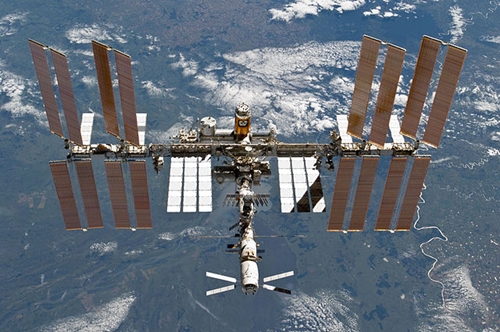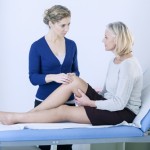Why one orthopedic researcher is using outer space to develop a new drug
According to Worksafe BC, a musculoskeletal injury can be incredibly challenging to overcome, and for many individuals can severely limit or complicate the possibility of continuing to work. For manual laborers, damage to joints, muscles or other areas that limit mobility and physical activity are especially dangerous.
Dr. Melissa Kacena, associate professor of orthopedic surgery at the Indiana University School of Medicine believes she may have uncovered a new form of therapy that changes the nature of recovery for such injuries. In an effort to prove that her bone-healing therapy will be successful, she has employed the help of the International Space Station to host an important study on weightlessness, according to Inside Indiana Business.
Why outer space?
In the next few months, Dr. Kacena's study equipment will hitch a ride on a SpaceX launch, where research will be conducted in full weightlessness over the course of 30 days. The source reported that mice will undergo existing bone-healing therapy alongside a group that will be given a new form of drug.
Dr. Kacena's drug does not utilize bone-forming cells like existing medications, but instead stimulates blood cells that later begin the process of building new bone. Normally a patient is required to bear weight on an injured leg to encourage the development of new growth, but Dr. Kacena aims to avoid this step, which she finds to be unrealistic for individuals with weak or damaged limbs.
"Drugs that are currently available need that weight-bearing to do a good job at healing," Dr. Kacena reported. "We have a drug that works by a different mechanism; it doesn't require the loading, and therefore, we think it will be better."
Existing tests with animals require immediate pressure and weight-bearing, which Dr. Kacena says is unrealistic.
"And that's not what happens to human patients in the same scenario.They're not bearing weight; they're using crutches or bed-ridden. This will be a better model," she said.
NASA is also interested in the results of the study, Inside Indiana Business stated. Individuals spending prolonged periods of time in space may lose up to one percent of bone density every month. Any therapy that can stimulate bone growth could have major implications for astronauts. Losing bone density leaves visitors to space or on future exploration missions vulnerable to breaks or fractures. Likewise, a future mission to Mars would take years, leaving astronauts susceptible to major bone loss.
Recent pictures taken of planet Earth by the astronauts aboard the International Space Station. Enjoy! pic.twitter.com/DrguJt0Ux7
— Spaceflight Now (@SpaceflightNow) February 22, 2016
Important implications
Not only is NASA involved with this project, but according to Inside Indiana Business, the Orthopedic Trauma Association is one of many other organizations that have provided funding for the research.
The findings may have important implications for those suffering from osteoporosis, as well as manual laborers who have suffered from an accident or other debilitation. Dr. Kacena reported that her main interest is helping soldiers and veterans recover from blasts and other dangerous situations. For that reason, the U.S. Department of Defense is also involved in the project.
According to National Geographic, hundreds of thousands of American armed forces members have been involved with explosions and other blasts in the past decade. In that time, Dr. Kacena reported that 85 percent of injuries related to such events effected the musculoskeletal system. As a result of bone damage, these individuals are unable to get out of bed, making traditional weight-bearing therapies impossible.
Beyond veterans, the National Osteoporosis Foundation reported that over 50 million Americans are living with the disease and other low bone mass issues. Many of these patients are also unable to realistically bear weight and fully utilize existing drugs. As a result, Dr. Kacena's research could have important implications for a large population.



